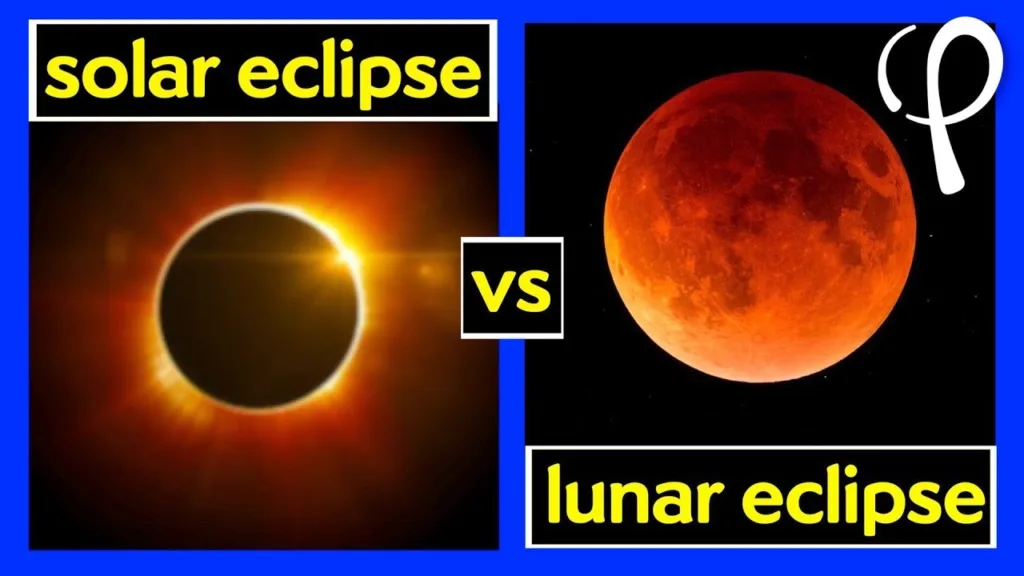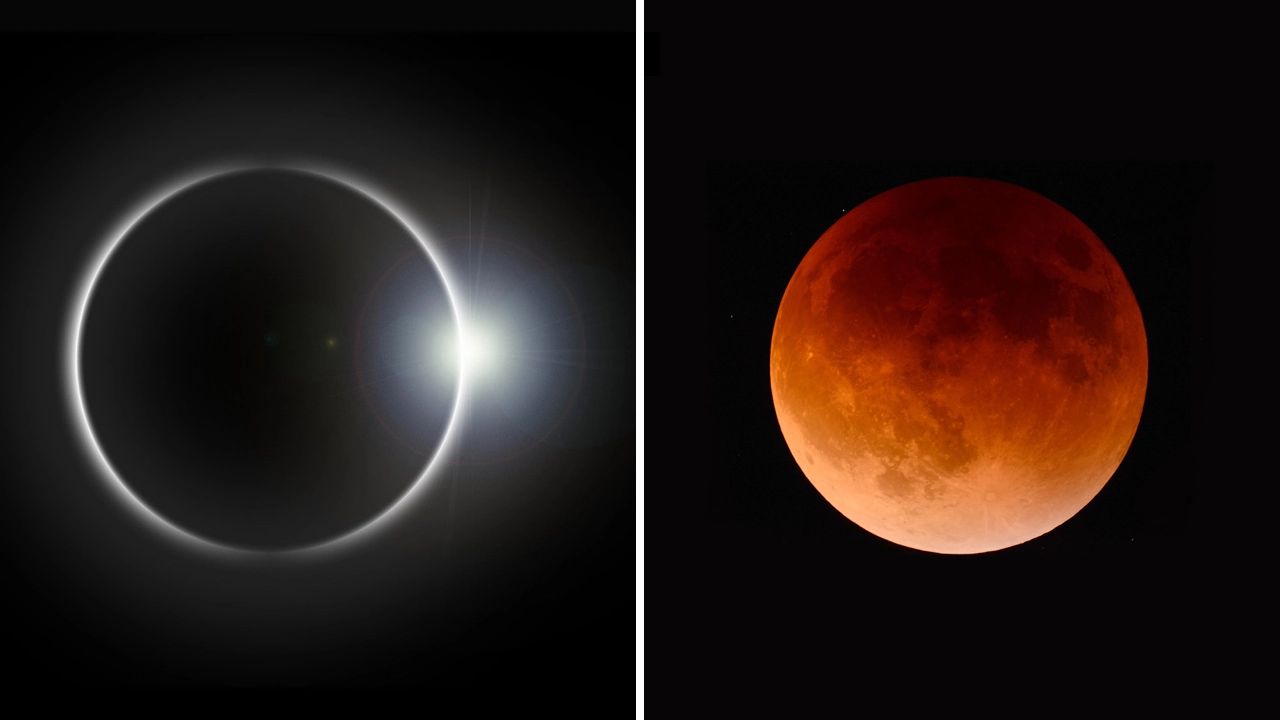A solar eclipse and a lunar eclipse are two astronomical phenomena that are frequently confused. Although they have some similarities, they also have significant differences. In this article, we’ll go over the distinctions between a solar eclipse and a lunar eclipse in depth.
Definition and Types of Eclipses
When the moon passes between the sun and Earth, it blocks the sun’s light and casts a shadow on Earth. Solar eclipses are classified into three types: total, partial, and annular.
When the Earth passes between the sun and the moon, it blocks the sun’s light and casts a shadow on the moon. Total, partial, and penumbral lunar eclipses are the three types.
Visibility
The visibility of a solar and lunar eclipse is one of the primary differences. A solar eclipse can be seen only from a narrow swath of land or water on Earth where the moon’s shadow falls. A lunar eclipse, on the other hand, can be seen from anywhere on Earth where the moon is above the horizon.

Timing
Another notable distinction between the two eclipses is their timing. A solar eclipse happens during the day, whereas a lunar eclipse happens at night. A solar eclipse lasts only a few minutes, whereas a lunar eclipse lasts several hours.
Have you read?
Who Was Anne Frank And Why Is She So Famous?
This Massive Rift Will Split Africa into Two
5 Weird and Wonderful Foods from Around the World
Frequency
Solar eclipses are rarer than lunar eclipses. Each year, there are two to three solar eclipses on average, with up to four lunar eclipses possible.
Appearance
A solar eclipse and a lunar eclipse have very different appearances. The moon appears to cover the sun during a solar eclipse, revealing a ring of light around the moon (in the case of an annular eclipse) or creating total darkness (in the case of a total eclipse). The moon appears reddish during a lunar eclipse because the Earth’s atmosphere refracts sunlight onto it.
Safety
It should be noted that looking directly at a solar eclipse can be dangerous to one’s eyes. It is advised to use specialised filters or observe the eclipse indirectly. Looking at a lunar eclipse, on the other hand, poses no risk to the eyes.
Conclusion:
In conclusion, while both solar and lunar eclipses involve the sun, moon, and Earth aligning, they are very different events. Solar eclipses are less common, can only be seen from certain locations, and must be viewed with special precautions. Lunar eclipses are more common, visible from anywhere on Earth, and can be observed safely with the naked eye. Understanding the differences between these two eclipses can help you appreciate their distinctive and fascinating features.

vurcazkircazpatliycaz.DuMm0hWPC3By
whipcord xyandanxvurulmus.Qibe8yjj2nkJ